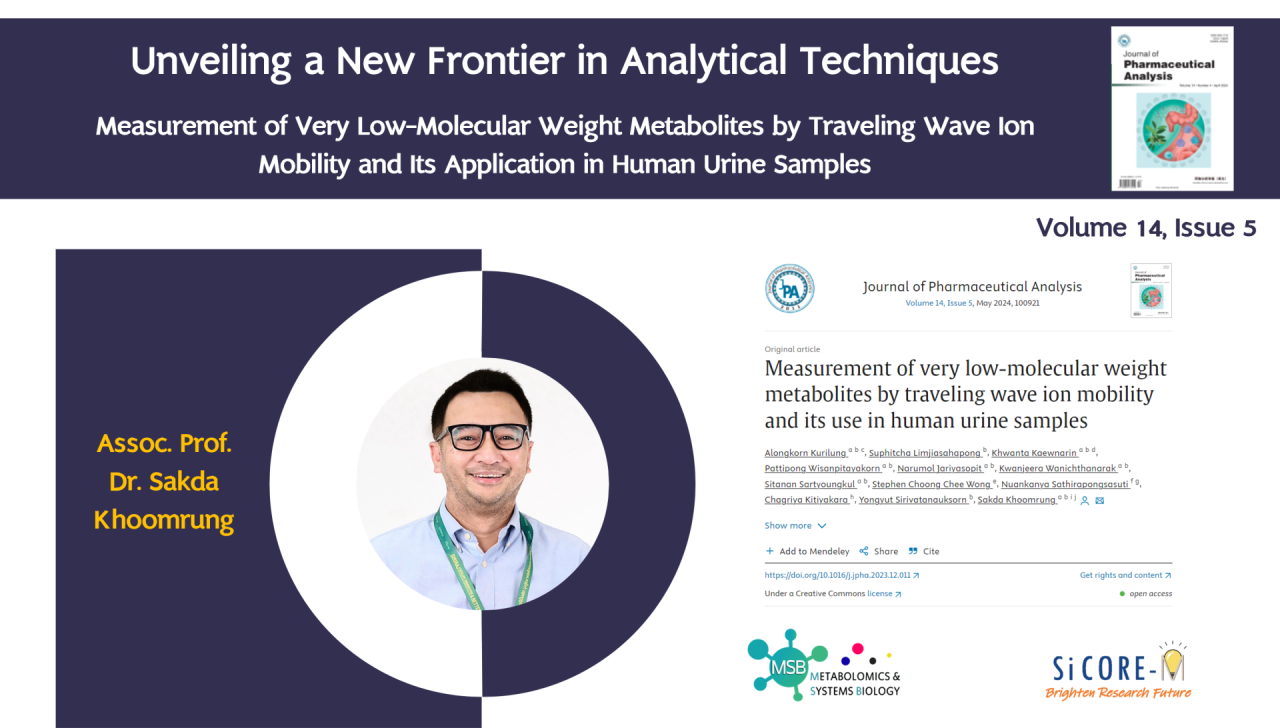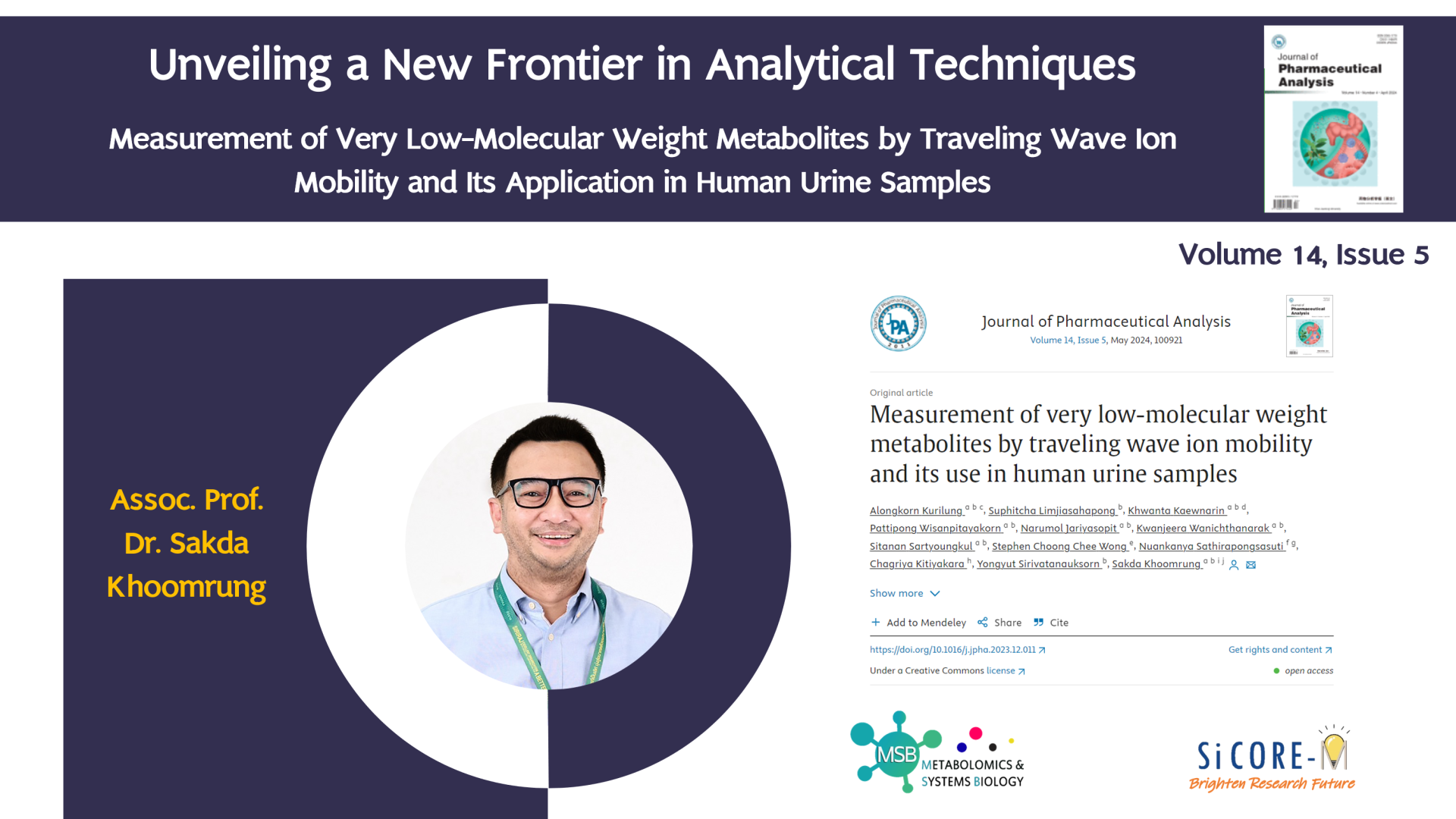We are thrilled to share the publication of groundbreaking research by the esteemed Assoc. Prof. Dr. Sakda Khoomrung, a leading figure from the Siriraj Center of Research Excellence in Metabolomic and Systems Biology (SiCORE-MSB), Faculty of Medicine, Siriraj Hospital, Mahidol University. The research was published in the Journal of Pharmaceutical Analysis on December 16, 2023. The publication can be accessed via the following link:https://www.sciencedirect.com/science/article/pii/S2095177923002940.
In this study, we present an innovative analytical method utilizing ultrahigh-performance liquid chromatography (UPLC) coupled with traveling wave ion mobility-quadrupole-time-of-flight mass spectrometry, optimized for the measurement of Very Low-Molecular Weight Metabolites (VLMs) in human urine samples. The experimental dataset includes mass-to-charge ratio (m/z), retention time (RT), tandem MS (MS/MS) spectra, and traveling wave ion mobility spectrometry (TWIMS)-derived Collisional Cross Section (TWCCSN2) values. Notably, 263 TWCCSN2 values were reported for the first time, with over 70% corresponding to VLMs. The TWCCSN2 values exhibited high repeatability, with inter-day variations of <1% relative standard deviation (RSD). Moreover, the method demonstrated excellent TWCCSN2 accuracy, with a Collisional Cross Section (CCS) difference (DCCS) within ±2% of reported drift tube ion mobility spectrometry (DTIMS) and TWIMS CCS values. Significantly, the complexity of the urine matrix did not compromise the method’s precision. Utilizing the Metabolomics Standards Initiative guidelines, we identified 55 urinary metabolites with a confidence level of 1, of which 53 (96%) were VLMs. The enhanced confidence in metabolite identification was attributed to the inclusion of TWCCSN2 values, significantly increasing the number of confirmed compounds.
This research marks a significant advancement in analytical techniques, paving the way for improved metabolite measurement and identification in human urine samples.



 Published
Published